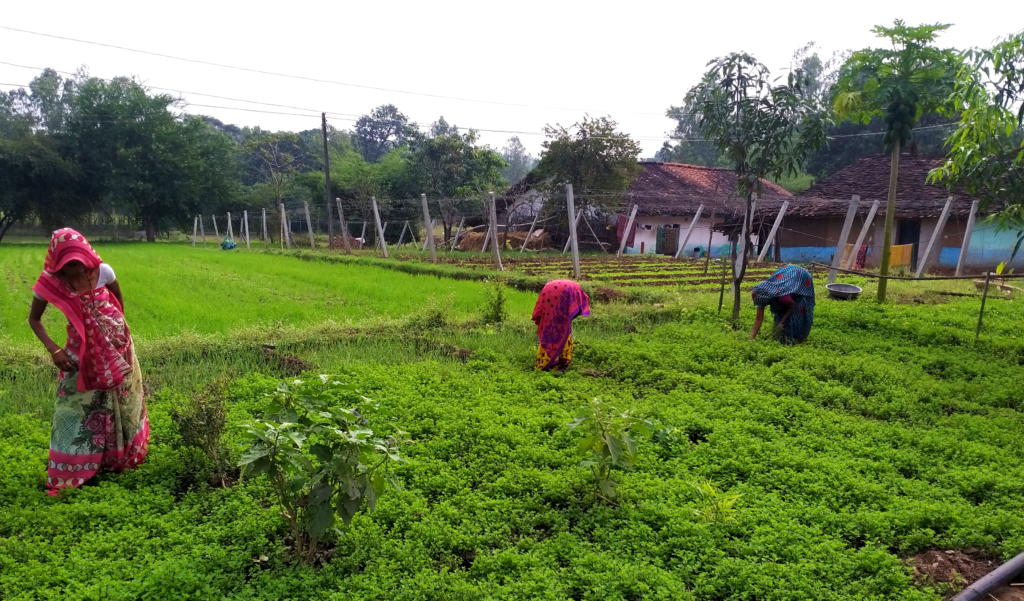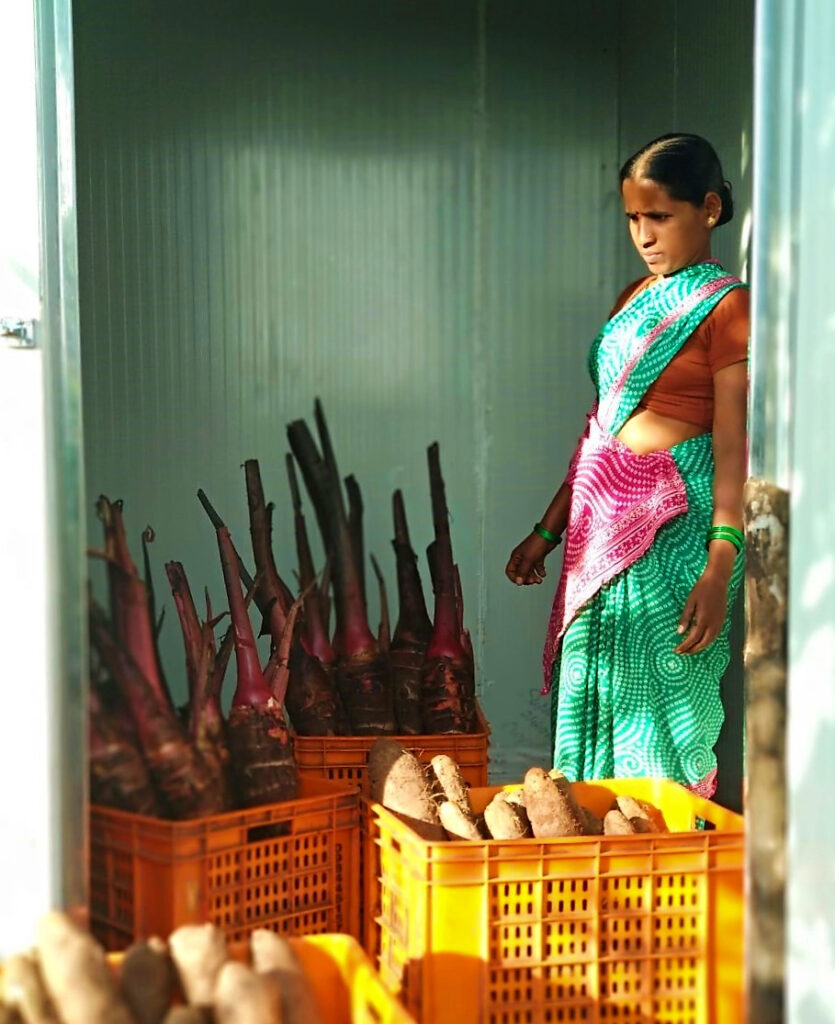
BASE is working with CoolCrop to provide off-grid solar-powered refrigeration through CaaS to farmers in India who otherwise do not have the means and resources to cold store their produce.
Background: India’s post-harvest challenge
India is an agricultural powerhouse. India is the largest producer of dairy products in the world, and the second-largest producer of rice, wheat, groundnut, fruits and vegetables. India produces 315 million tons of horticulture products in an area of wp-contentroximately 26 million hectares, where nearly 80 per cent of the farmers are small holders with less than a hectare of land.
But despite this agricultural wealth, India has not been able to feed its citizens. India faces food and nutrition insecurity. According to the 2014 Global Hunger Index, India ranks 55 among 120 countries with the highest food insecurity. Data from the Global Nutrition Report indicates that 14 per cent of India’s population or over 190 million people are underfed, 1 in 4 children are malnourished and 3,000 die every day from illnesses related to poor diets.
A high proportion of the food produced is wasted before it even reaches the market. Crops worth wp-contentroximately USD 19.4 million are wasted in India on a daily basis only due to rejection at the farm gate and delays in the distribution process. According to FAO, overall, more than 40 per cent of agricultural produce is loss in India every year before it reaches the consumers – as much as the whole consumption of the United Kingdom and worth wp-contentroximately USD 14 billion. This high volume of losses, if reduced, can generate significant value and address food insecurity for the country.
Post-harvest losses stem from a range of factors including lack of post-harvest infrastructure, limited technical know-how on good agricultural practices, imperfect market knowledge and inadequate market access. According to the National Horticulture Board, there is a 90 per cent deficit and misallocation of cold storage facilities. Less than 10 per cent of the horticulture produce currently moves through a cold chain, compared to about 60 per cent in developed countries. This affects farmers’ incomes, which further impacts their ability to invest in technologies that can help reduce these losses.
Cooling underpins the ability of millions of people to escape poverty and food insecurity, while at the same time providing an opportunity to provide sustainable, clean agricultural and resilient development. Clean cooling technologies are available, but their deployment has been limited by high up-front costs, uncertain returns and limited financing options for the most vulnerable.
Cooling as a Service improves access to cooling
In the past two years, the Basel Agency for Sustainable Energy (BASE), an Efficiency for Access Programme Partner, has been working to mainstream Cooling as a Service (CaaS) around the world.
CaaS makes efficient and high-tech cooling accessible to everyone through a pay-as-you-cool model. Users do not purchase equipment, therefore avoiding the upfront costs of expensive modern cooling systems. Instead, users only pay a monthly fee, based on the amount of cooling used. This fee includes maintenance, repairs, and running costs, such as electricity and water.
BASE launched the CaaS Incubator initiative in January 2020 with the aim to support five technology providers from around the world in implementing CaaS projects. In India, BASE is working with CoolCrop, one of the five winners selected for the CaaS Incubator programme, an agro-cooling project for smallholder farmers in rural India.
CaaS benefits farmers in India
BASE is working with CoolCrop to provide off-grid solar-powered refrigeration through CaaS to farmers in Gujarat, Karnataka, Bihar, Telangana and West Bengal, who otherwise do not have the means and resources to cold store their produce.
CoolCrop estimates that the farmers’ incomes will increase by at least 50 per cent thanks to CaaS, as they will be able to preserve vegetables and fruits for longer durations, while post-harvest wastage will decrease to below 5 per cent (from more than 25 per cent previously). Moreover, the project also generates jobs as it employs at least two to three additional farm workers to operate and maintain the refrigeration units.
CoolCrop’s customisable decentralised cooling centres uses a solar-grid hybrid model that include a control and monitoring board which provides at least 20 per cent energy savings over conventional cooling modules. The equipment enables farmers to store and preserve their harvest and facilitates aggregated sales at better prices, which can result in an increase in the income by at least 50 per cent.
Furthermore, the services provided include key processing facilities such as sorting, grading and packaging mechanisms which improve the capacity at farm gate and enables farmers to carry out agricultural extension of their business. CoolCrop also offers a mobile wp-content which estimates the price of each produce for a given geography and time by means of machine learning. This enables the farmer to decide the optimum time to sell her produce.
CoolCrop’s systems also generate direct employment for rural youth, most of whom would otherwise be working in agrarian geographies to operate, manage, and sustain the systems and project as whole. Employment for a sustainable livelihood will help in addressing rural distress due to reverse migration – especially in India’s post COVID-19 scenario.
